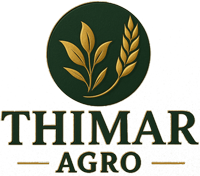How Global Grain Trading Shapes What Ends Up on Your Plate
Most people rarely think about how their daily food staples like bread, rice, or lentil stew depend on a vast and complex system of international grain trading. But behind every bite lies a web of relationships, logistics, and decisions made across continents. Understanding this global grain economy not only helps importers and distributors make better choices, but also sheds light on food security and price volatility that affect us all.
1 – The Global Nature of Grain Trade
Grains are among the most traded commodities worldwide, with wheat, rice, corn, and pulses being the most prominent. Countries with favorable climates and agricultural infrastructure produce surplus, while others import to meet demand. This interconnectedness means that a weather event in Argentina or a policy change in Ukraine can influence prices in Dubai, Nairobi, or Singapore.
2 – Why International Sourcing Matters
Relying on a single country or region for grain supply can be risky. Droughts, political instability, or shipping disruptions can halt exports. Diversified sourcing across Asia, Africa, Europe, and the Americas not only ensures continuity but also allows importers to compare quality, pricing, and timing to stay competitive.
At Thimar Agro, for instance, this approach allows us to source grains from multiple countries based on seasonality, quality, and market demand ensuring a consistent supply for our clients.
3 – Factors That Affect Grain Prices
Grain prices aren’t just affected by supply and demand. Transportation costs, currency fluctuations, tariffs, weather anomalies, and even speculative trading on commodity markets all play a role.
Importers and traders must constantly monitor these variables to secure favorable contracts and avoid unexpected costs.
4 – The Role of Technology in Modern Grain Trade
Digital tracking, real-time analytics, and automated documentation have transformed the way grains are traded. Importers can now monitor shipments in real-time, assess risk models, and ensure compliance with international safety standards with greater ease. This transparency has improved trust across the supply chain.
5 – Ensuring Quality and Compliance
Global trade requires strict adherence to food safety regulations. Different countries have different allowable limits for moisture, pesticide residues, and contaminants. Traders must ensure proper documentation, third-party inspection, and lab testing before shipments leave port.
At Thimar Agro, we work with certified partners and labs to make sure that our grain shipments meet or exceed food safety standards at every stage of the supply chain.
Conclusion
Grain trading is much more than buying and selling its a dynamic, ever-evolving system that directly affects what people eat, how much it costs, and when it becomes available. For businesses involved in importing, distributing, or retailing grains, understanding this global ecosystem is not just an advantage it’s a necessity. By staying informed, building strong global partnerships, and embracing innovation, companies like Thimar Agro help keep the world’s food supply resilient and reliable.

